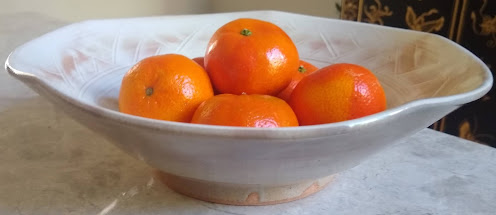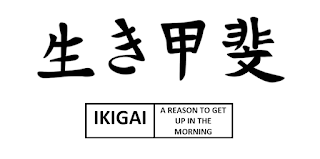Appreciating flaws – Wabi Sabi
Beauty is usually perceived as something which is eternal, flawless and perfect - a taste of beauty that is shaped by an appetite for excellence that cannot be exceeded. Since the arrival of Snapchat, Instagram and Facebook, perfectionism has ramped up a notch, arguably motivated by the need to seek approval and validation. Posts, videos and photos of photogenic holidays, aesthetic snapshots of meals out and a perfect selfie, accompanied by numerous adverts promoting everything from perfect skin to perfect life. Judgments, based upon what is considered perfect, have consequences that affect the quality of life, and the social and political climate of a society. We hear and experience so much anxiety and pressure to be perfect.
Perfection – a different perspective
Perhaps the reason is partly to do with perception and the conventional concept of beauty and perfection. The ancient Eastern aesthetics is very different and the core of the difference is captured by a concept known as Wabi Sabi, for which Western languages have no direct equivalent. The Buddhist teaching known as the philosophy of Wabi Sabi in Japanese, provides a different perspective and helps us embrace our imperfections, it can even help us perceive them as things of beauty.
The philosophy of Wabi Sabi
Simply put, Wabi
Sabi refers to a way of living that focuses on accepting impermanence and finding
beauty within the imperfections of life.
Wabi generally means simple, unmaterialistic, and in tune with nature. Nothing about nature is perfectly linear or symmetrical or permanent. Its complex cycles of life, imperfect patterns and complexity serves as a lens through which we can understand the world as imperfect, unfinished, and transient.
Sabi signifies the beauty of ageing - the graceful and quiet dignity of something (or someone) persisting through time; a kind of beauty that comes only with age, such as the discolourisation on a very old bronze statue.
What can we learn from Wabi Sabi
1. Valuing your
flaws
Characteristics of the Wabi Sabi
aesthetic refers to rustic, asymmetrical, with quirks and anomalies arising
from the process of construction. The resulting uniqueness and elegance adds to
the beauty of the object. The beauty is appreciated not only for its subtle
form and subdued colours but also for the glaze which purposefully draws out
the natural contours that form the characteristic of each piece of pottery. It
is up to the knowledge and observational ability of the participants to notice
the hidden signs of the true beauty of the design and glaze.
This helps us to perceive our imperfections as part of this ever-evolving life we live. Each and every one of us humans have our own flaws, making us diverse, unique, interesting and inspiring individuals, which adds to our beauty and marvel. But often, we try and hide our mistakes and our imperfections, and present only what we would like to show the world. Yet it’s those difficult life lessons, the mistakes we have made along the way in our life’s journey that at times serve us as some of the most important experiences of all, leading us ultimately to growth and deeper understanding. It is these struggles, experimentations and all those experiences that make each one of us rich with our own unique perspective and adds diversity.
2.
Valuing experiences
The term Wabi Sabi derives not from
invincibility, youth, flawlessness but respect for things bearing the marks of age as a result of
passing through time. For instance, with wine, the process starts with the
soil, the grape and its growing experience - the weather, the care: pruning,
training and keeping healthy. There is a
point at which the grape is deemed ready for harvest. Its crushed, pressed and fermented.
The emergent wine is now ready to mature and aged in oak barrels to achieve
perfection.
Drawing a parallel to this process and the essence of all our life experiences, when are we deemed to achieve perfection? When we have the sharp notes of youth or when these are softened and we’ve acquired the richness from periods of joys and struggles? Odd isn’t it, that we value and appreciate the delight of maturity in wines, but have somehow lost the ability to recognise its value and pleasures of our own experiences through ageing in our own lives.
3. Acceptance
of Impermanence
A great example of Wabi Sabi is the
art of kintsugi, where broken pottery is beautifully, lovingly and carefully repaired by filling the cracks with gold lacquer creating
a beautiful lining. This is to emphasise the beauty of its flaws rather than make the cracks invisible, reminding
the observer that nothing is permanent and awarding
respect to what it has
been through.
The same goes for human life – realising that our life is not meant to be perfect and that negative occurrences are not permanent, neither are positive ones. Rather than viewing our struggles as permanent, one can begin to see them as the precious gifts that they are. We can choose to fill our struggles with gold, turning something that could be ugly, making it beautiful and inspiring - with enough time, self-care, reflection, and self-compassion, we can learn to become better people.
Don’t let your
flaws hold you back
Stop chasing perfection! It can be a hindrance to your self-development, and generally forbids you doing anything important that might fail. Perfect is a defence mechanism - if we are perfect then we can minimise or avoid the pain of blame, judgement, and shame. It’s a shield and we think it will protect us when, in fact, it’s the thing that really prevents us from being good enough. Let go of who you think you’re supposed to be and embrace your true self. The near constant comparison of our lives to others is now cited as being hugely detrimental to our mental health. And the simple truth is, no one is perfect.
Copyright ©
2020 Kalpna Hirani



